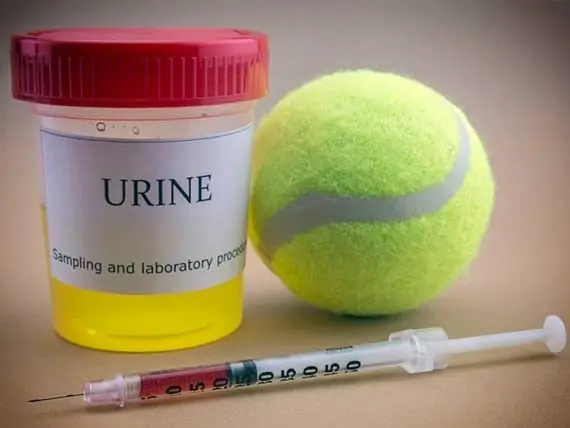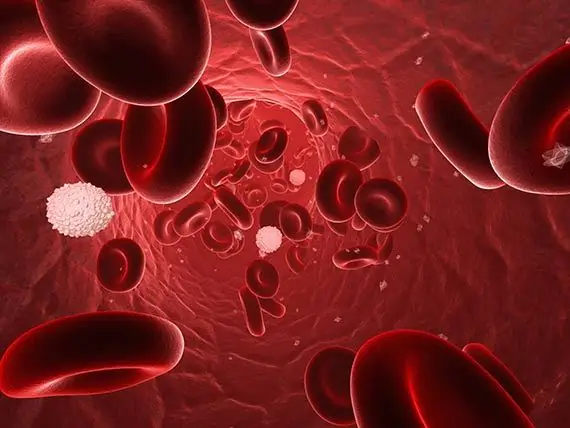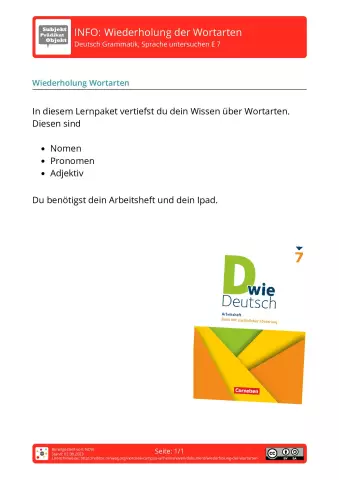
- Tác giả Daisy Haig [email protected].
- Public 2023-12-17 03:15.
- Sửa đổi lần cuối 2025-06-01 06:48.
Vậy bài kiểm tra caca đáng xấu hổ đó để làm gì?
Thật là đủ căng thẳng khi bị một thanh nhựa xâm phạm vào mặt sau của thú cưng, phải không? Vậy vấn đề là gì?
Bạn nói: Nếu mục đích là làm cho thú cưng của tôi khỏe mạnh hơn và không có ký sinh trùng thì tôi sẽ tin tưởng vào phán đoán của bạn, nhưng tôi phải nói rằng, kiểm tra phân là một loại hình phạt tàn nhẫn và bất thường. Tôi sẽ không nhận được sự sỉ nhục như vậy cho đến khi tôi là nam giới và bốn mươi tuổi, phải không? Và phân không hữu ích, phải không?
Tôi nói: Đối với những người mới bắt đầu, bạn không cần phải để con vật cưng của mình khuất phục trước cái que hèn hạ. Bạn thường dễ dàng lấy được mẫu tươi vào buổi sáng (hoặc buổi chiều) trước chuyến thăm hàng năm của bạn hoặc bất kỳ lúc nào thú cưng của bạn có các triệu chứng về đường tiêu hóa. Nó không quá khó, thực sự. Và nếu thời gian không chính xác (phân không được lâu hơn một giờ để có kết quả tốt nhất), bệnh viện thú y chắc chắn sẽ không từ chối bạn có quyền mang mẫu siêu tươi vào bất cứ lúc nào. Lời hứa.
Và vâng, xét nghiệm phân, mặc dù tương đối rẻ và thường xuyên, là không thể thiếu. Nhưng như bài đăng này sẽ chứng minh, cũng đúng rằng không phải tất cả các xét nghiệm phân đều sẽ phát hiện nhiễm ký sinh trùng ở vật nuôi của bạn. Đó là lý do tại sao việc kiểm tra phân hàng năm và / hoặc nối tiếp có thể cần thiết.
Bây giờ đối với mục tiêu chính của bài kiểm tra:
Các bác sĩ thú y luôn theo dõi các loại ký sinh trùng có thể tìm đường xâm nhập vào đường tiêu hóa của thú cưng của bạn. Chắc chắn, con người chúng ta cũng có thể bị nhiễm ký sinh trùng, nhưng lối sống hiện đại của chúng ta có xu hướng ít có lợi cho việc nhiễm ký sinh trùng hơn. (Lần cuối cùng bạn đi hít đất trong sân, môi chạm đất, chỉ để bạn có thể hít một hoặc hai đám cỏ mèo là khi nào?)
Có, vật nuôi có rất nhiều ký sinh trùng. Dưới đây là mẫu các loại ký sinh trùng đường tiêu hóa phổ biến nhất mà tôi thấy ở đây [ở thiên đường ký sinh trùng bán nhiệt đới Nam Florida]:
Giun đũa ở chó và mèo.
Giun móc ở vật nuôi
Giun roi ở vật nuôi
Giardia ở vật nuôi

Sán lá gan ở vật nuôi
Sán lá gan ở vật nuôi
coccidia in pets
i’ll not go into the gory details on each but you can click on the links and check out the info for a better understanding of how these parasites can potentially affect your pets and even your human family.
sure, pet-popular parasites don’t often infect humans in the so-called, “developed” nations all of you reading this likely live in, but that doesn’t mean it doesn’t happen. roundworms and hookworms are still a factor in humans in the us, as is giardia, which will give you the nastiest case of diarrhea you can imagine short of amoebic dysentery.
since veterinarians are also on the front lines when it comes to public health, consider that fecal exams are not just necessary for healthy pets, they’re essential for healthy humans, too, more so if your family members are very young children, very old adults or otherwise immunocompromised (transplant patients, hiv-positive humans, chemo recipients, etc.).
how do we identify these critters in the fecal exam?
the short answer: with a microscope.
the long answer: we take a tiny sample of your pet’s stool (very fresh is always best). a few grams is enough (think an eighth of a teaspoon if that’s easier). then we put it through one of three processes.
1. the smear: we take about a half gram of stool and smear it onto a microscope slide to search for parasites (and bacteria) directly. many times we’ll see them swimming about. finding evidence of parasites in a simple smear is often indicative of severe infection.
2. the float: this method relies on mixing the stool with a special solution. it filters out the big pieces of stool in a tube or other cylindrical vessel and allows the eggs and other small critters to float up to the top, buoyed by the solution’s specific gravity. a microscope slide’s cover slip is typically used to recover the floaters. some parasites, however, aren’t amenable to flotation. eggs seem to do best through this method.
3. centrifugation: spinning the heck out of stool in a centrifuge when it’s mixed in a sugar solution picks up about 50% more parasite eggs and oocysts than through flotation. therefore, i like this method best for worm eggs, giardia, and coccidia--though i’d never go without a smear. problem is, most hospitals don’t yet use this method. it’s more expensive than others and research demonstrating it’s much greater efficacy is fairly recent.
so now you know the truth: not all fecal exams are created equal. not only does this test rely on careful selection of materials and methods, it also requires a trained eye. in our practice, for example, one of our techs detects parasites about 50% more often than the veterinarians and other techs/assistants. (that’s why we also do floats so that she can check them all at her convenience when she comes back from her day off.)
it’s also true that even a parasite-infected animal will often not come up positive on a fecal test. human error and equipment choice are factors, but so is the parasite itself. sometimes they do not make themselves known in the stool. worms sometimes aren’t shedding their eggs and subclinical (low-grade or smoldering) infections may not reveal much, either.
again, that’s why it’s important to perform this test as often as is reasonable. for all dogs and cats at least three times during the first few months of life. i want to see at least two negative tests in a row, a month apart, before i’ll feel comfortable that my patient is parasite-free.
for adults, once a year is great--that is, unless they show gastrointestinal illnesses. in this case, serial fecal tests make sense--or at least one every time the symptoms recur until a definitive diagnosis is made (whether it’s parasites or something else).
ultimately, fecal tests are a critical component of our veterinary hat of tricks. doing without may seem like the economically wisest thing in the absence of gastrointestinal symptoms, but consider: parasites can wear pets down in ways you might not expect. and it’s never wrong to be too safe in the presence of diseases that may also affect your family. ‘nuff said.
Đề xuất:
Tầm Quan Trọng Của Giai đoạn Nuôi Thú Cưng Bị Ung Thư, Phần 3 - Xét Nghiệm Nước Tiểu Và Phân Cho Vật Nuôi Bị Ung Thư

Một phần của quá trình điều trị ung thư cho vật nuôi là kiểm tra tất cả các chất lỏng khác nhau của cơ thể. Trong phần này, Tiến sĩ Mahaney giải thích quy trình xét nghiệm nước tiểu và phân. Đọc thêm
Tầm Quan Trọng Của Giai đoạn Nuôi Thú Cưng Bị Ung Thư, Phần 2 - Xét Nghiệm Máu Cho Vật Nuôi Bị Ung Thư

Xét nghiệm máu cho chúng ta biết rất nhiều về sức khỏe bên trong cơ thể vật nuôi, nhưng nó không tiết lộ một bức tranh toàn cảnh, đó là lý do tại sao việc đánh giá toàn bộ máu là một trong những xét nghiệm mà bác sĩ thú y thường đề nghị khi xác định tình trạng của vật nuôi. sức khỏe - hoặc bệnh tật
Tại Sao Lặp Lại Các Xét Nghiệm Chẩn đoán Là Một Phần Quan Trọng Của điều Trị Ung Thư ở Vật Nuôi

Đôi khi tôi gặp các trường hợp chạy chẩn đoán, nhưng tôi thực sự cảm thấy chúng ta nên kiểm tra lại kết quả, lặp lại kiểm tra được đề cập hoặc chạy một kiểm tra tương tự có thể cung cấp thêm thông tin. Thật khó để giải thích cho người chăm sóc tại sao tôi nghĩ rằng điều này là vì lợi ích tốt nhất của thú cưng mà không bị nhận ra, tôi chỉ đơn giản là muốn tiêu nhiều tiền hơn của họ
Xét Nghiệm Nước Tiểu: Tại Sao Phải Xét Nghiệm Nước Tiểu Của Mèo

Kiểm tra thú y thường xuyên cho mèo của bạn là cách tốt nhất để giữ cho mèo của bạn khỏe mạnh. Trong hầu hết các trường hợp, bác sĩ thú y của bạn có thể sẽ đề nghị xét nghiệm máu và nước tiểu như một phần của quá trình kiểm tra kỹ lưỡng
Xét Nghiệm Phòng Thí Nghiệm Cho Bạn Biết Gì Về Sức Khỏe Của Mèo

Khám thú y rất quan trọng đối với sức khỏe của mèo. Bác sĩ thú y rất có thể sẽ khuyên bạn nên thực hiện xét nghiệm máu và nước tiểu định kỳ cho mèo của bạn. Những xét nghiệm máu và nước tiểu này có thể cho thấy điều gì mà khám sức khỏe có thể không? Những câu hỏi này được trả lời ở đây
